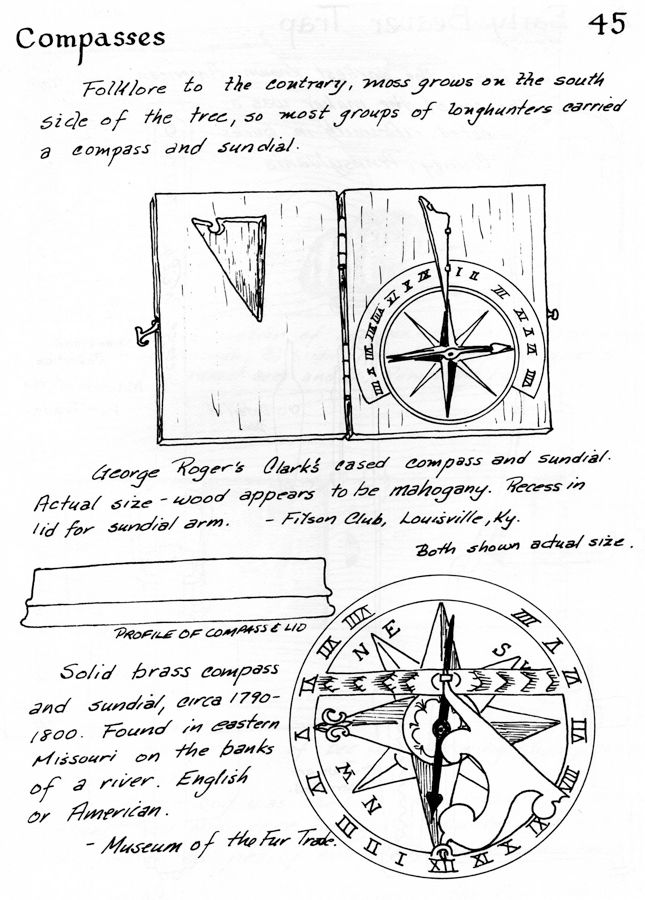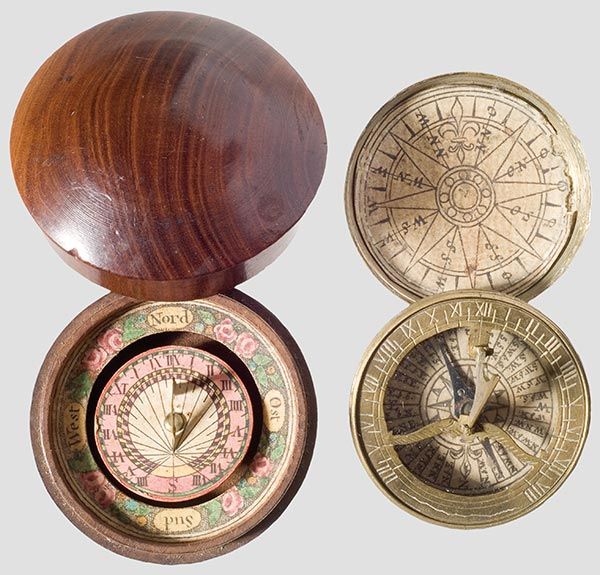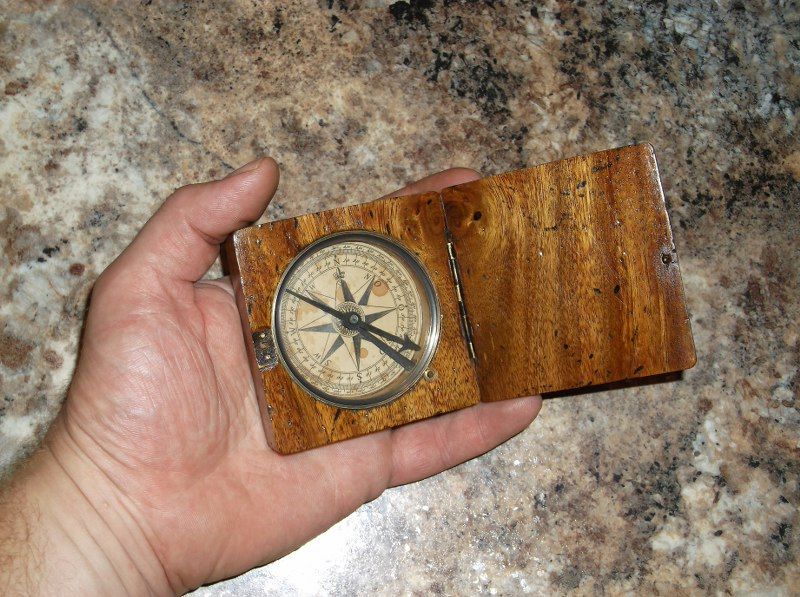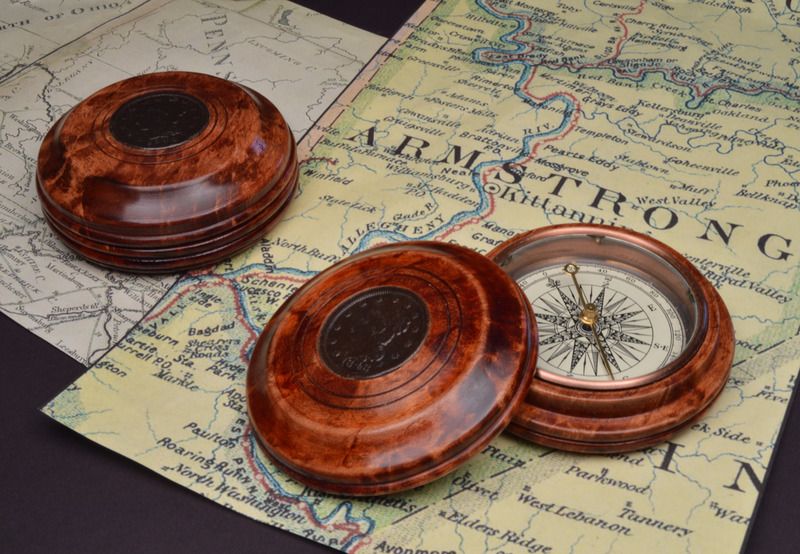I got a nice brass one from the log cabin shop in Lodi .....25$ I think.
-
This community needs YOUR help today. We rely 100% on Supporting Memberships to fund our efforts. With the ever increasing fees of everything, we need help. We need more Supporting Members, today. Please invest back into this community. I will ship a few decals too in addition to all the account perks you get.

Sign up here: https://www.muzzleloadingforum.com/account/upgrades -
Friends, our 2nd Amendment rights are always under attack and the NRA has been a constant for decades in helping fight that fight.
We have partnered with the NRA to offer you a discount on membership and Muzzleloading Forum gets a small percentage too of each membership, so you are supporting both the NRA and us.
Use this link to sign up please; https://membership.nra.org/recruiters/join/XR045103
You are using an out of date browser. It may not display this or other websites correctly.
You should upgrade or use an alternative browser.
You should upgrade or use an alternative browser.
Quality Compass
- Thread starter Crewdawg445
- Start date

Help Support Muzzleloading Forum:
This site may earn a commission from merchant affiliate
links, including eBay, Amazon, and others.
So, if I have been understanding this discussion, a frontiersman with a compass (or a telescope or magnifying lense) would stand out among his compadres even though this equipment would be fairly light and compact?
That's tough to say..., obviously as early as the F&I there were officers using them. They were leading groups of men so the rest of the fellows in the group didn't need them, but as Rangers, they were moving into areas totally alien to them. George Washington was a very young man when working as a surveyor, and they would have used a compass. Then you also have the fact that the Indians moved all over the continent, never having them.
:idunno:
LD
Another item of the use of compasses by Washington, when he and Christopher Gist were returning from delivering to the French the protest of Governor Dinwiddie against the encroachment of the French on territory claimed by the English, 1756, from Gist’s journal:
“I followed him, and listened until he was fairly out of the way, and then we set out about half a mile, when we made a fire, set our compass, and fixed our course, and travelled all night, and in the morning we were on the head of Piney creek.”
From _Letters from an American Farmer_, 1781, J. Hector St. John de Crèvecoeur, describing his gear when setting out for a week to search for wild bee hives:
“I take with me my dog, as a companion, for he is useless as to the game; my gun, for no man you know ought to enter the woods without one; my blanket; some provisions; some wax; vermillion; honey; and a small pocket compass.
Journal of Wm. Calk, among the first settlers to Kentucky, 1775: “... Eanock Abram & I got lost tuesday night & it a snowing & Should a lain in the mountains had not I a had a pocket compas By which I got in a littel in the night and fired guns and they heard them and caim in By the Repoart.”
THE VIRGINIA GAZETTE 3
Date: June 30, 1775
FINCASTLE, May 21, 1775.
RUN away from the subscriber,... a shot-bag and powder-horn, a canister with 2 lbs. of powder, a falling axe, a pocket compass, &c. &c.
Many ads offer compasses of various type for sale in the 18th century, pocket compasses high on the list.
The Pennsylvania Gazette
July 28, 1737
TO BE SOLD, BY John Brientnall in Chesnut Street, Pocket Compasses of several Sorts, some of them with Dials;
The Pennsylvania Gazette
May 16, 1765
Just imported in the Ship Britannia, Captain McPherson, from London, and to be sold by HANNAH BREINTNALL,... Magnifying, Multiplying, Spying and burning Glasses, with some Ox eye Glasses, for taking Landscapes, Pocket Compasses, &c.
The Pennsylvania Gazette
June 16, 1737
Just Imported, and to be SOLD ”¦ Gun Locks, Flints, Knitting needles, brass and iron Jews Harps, brass pocket Compasses, Snuff and Tobacco Boxes,
THE SOUTH-CAROLINA GAZETTE
June 29, 1747
CHARLES-TOWN
...ship chandlery ware, viz. cordage, sail duck, sail twine, needles and palms, quarter wagoners, mariners compasses and kalenders,
_The Longhunter's Sketchbook_, Dr. James Hanson has typical late 18th-century examples:

Spin away. :wink:
Spence
“I followed him, and listened until he was fairly out of the way, and then we set out about half a mile, when we made a fire, set our compass, and fixed our course, and travelled all night, and in the morning we were on the head of Piney creek.”
From _Letters from an American Farmer_, 1781, J. Hector St. John de Crèvecoeur, describing his gear when setting out for a week to search for wild bee hives:
“I take with me my dog, as a companion, for he is useless as to the game; my gun, for no man you know ought to enter the woods without one; my blanket; some provisions; some wax; vermillion; honey; and a small pocket compass.
Journal of Wm. Calk, among the first settlers to Kentucky, 1775: “... Eanock Abram & I got lost tuesday night & it a snowing & Should a lain in the mountains had not I a had a pocket compas By which I got in a littel in the night and fired guns and they heard them and caim in By the Repoart.”
THE VIRGINIA GAZETTE 3
Date: June 30, 1775
FINCASTLE, May 21, 1775.
RUN away from the subscriber,... a shot-bag and powder-horn, a canister with 2 lbs. of powder, a falling axe, a pocket compass, &c. &c.
Many ads offer compasses of various type for sale in the 18th century, pocket compasses high on the list.
The Pennsylvania Gazette
July 28, 1737
TO BE SOLD, BY John Brientnall in Chesnut Street, Pocket Compasses of several Sorts, some of them with Dials;
The Pennsylvania Gazette
May 16, 1765
Just imported in the Ship Britannia, Captain McPherson, from London, and to be sold by HANNAH BREINTNALL,... Magnifying, Multiplying, Spying and burning Glasses, with some Ox eye Glasses, for taking Landscapes, Pocket Compasses, &c.
The Pennsylvania Gazette
June 16, 1737
Just Imported, and to be SOLD ”¦ Gun Locks, Flints, Knitting needles, brass and iron Jews Harps, brass pocket Compasses, Snuff and Tobacco Boxes,
THE SOUTH-CAROLINA GAZETTE
June 29, 1747
CHARLES-TOWN
...ship chandlery ware, viz. cordage, sail duck, sail twine, needles and palms, quarter wagoners, mariners compasses and kalenders,
_The Longhunter's Sketchbook_, Dr. James Hanson has typical late 18th-century examples:

Spin away. :wink:
Spence
- Joined
- Jan 3, 2013
- Messages
- 20,091
- Reaction score
- 1,018
Being the gourmet that you are, could you offer me a recipe for hat? ... .... seeing as I'm now going to have to eat mine.... :haha:
Nice post Spence.. :hatsoff:
Nice post Spence.. :hatsoff:
Different things in different places.the thick rain wet dark woods of pacific north west is a whole different world then Rockies or the ozarks. In general the moss thing will work. Rocks or fallen logs also as in general moss grows on the northern side. It's not absolute,you look for the proponderance.
Speaking of, note the way trees have fallen in the woods. Trees rarely fall north here in the ozarks most fall pointing in a south easterly direction. It's not absolute,but pay attention to dead fall in your area. Stand on a dead fall base root ball or base north will most likely be your best guess is north to the left to behind you.like moss it's not absolute but is an indicator.watch your woods when you know your directions and those markers serve you well if you lose your way.
Speaking of, note the way trees have fallen in the woods. Trees rarely fall north here in the ozarks most fall pointing in a south easterly direction. It's not absolute,but pay attention to dead fall in your area. Stand on a dead fall base root ball or base north will most likely be your best guess is north to the left to behind you.like moss it's not absolute but is an indicator.watch your woods when you know your directions and those markers serve you well if you lose your way.
I'll depend on a compass. The way trees fall depends on the way the wind blows.
In the army during long and not very stimulating classes on Land Navigation, they taught us with quite a bit of documentation that moss etc. was not at all definitive and to not depend on anything but a compass. When I was in VN, (where the North Star wasn't visible) and it was cloudy and covered with vegetation, I carried two compasses, one a Lensetic compass for fine navigation and a wrist compass to generally tell me which way I was going.
Major Rogers (Rogers' Rangers) depended on a compass, according to my classes in Ranger School. A compass is such a simple thing for navigating in unknown territory. I like'em.
In the army during long and not very stimulating classes on Land Navigation, they taught us with quite a bit of documentation that moss etc. was not at all definitive and to not depend on anything but a compass. When I was in VN, (where the North Star wasn't visible) and it was cloudy and covered with vegetation, I carried two compasses, one a Lensetic compass for fine navigation and a wrist compass to generally tell me which way I was going.
Major Rogers (Rogers' Rangers) depended on a compass, according to my classes in Ranger School. A compass is such a simple thing for navigating in unknown territory. I like'em.
Can't beat a compass, and yes trees do fall the way the wind blows. However watch your prevailing winds. Winds don't blow north here vary often,thus few trees fall north.you have to mark the condions of the woods your in.whats true in the ozarks might not work in the big woods or down east,I got turned around hiking on the Olympia pensula a few years ago.learn the way thinks work in your neck of the woods and it will serve you if lost.
You have to learn your compass too.I'm almost striegh south of magnetic north. Western Washington almost 20 degrees off.north Carolina or Maine off in the other direction.
You have to learn your compass too.I'm almost striegh south of magnetic north. Western Washington almost 20 degrees off.north Carolina or Maine off in the other direction.
- Joined
- Mar 9, 2007
- Messages
- 1,154
- Reaction score
- 529
Spence, That is a darn nice compendium of compass references. Thanks. But now I have to find my copy of The Long Hunters Sketchbook. Haven't looked at it in years.
Jeff
Jeff
Indebted to you and your searchable data base once again, Spence! You add so much to this forum.
:hatsoff:
:hatsoff:
Being the gourmet that you are, could you offer me a recipe for hat? ... .... seeing as I'm now going to have to eat mine.... :haha:
I use the same one I do for crow, but boil it a bit longer. :haha:
I like my crow jerked, that way it saves me time in prep AND I can always have a several pieces with me, as I never can tell when I shall need to dine on such. :haha:
LD
Do taste a lot like duck.
Sorry for the late reply but TOTW has them for under $30
https://www.trackofthewolf.com/List/Item.aspx/9/1
When I got mine years ago they were under $20.
https://www.trackofthewolf.com/List/Item.aspx/9/1
When I got mine years ago they were under $20.
Last edited by a moderator:
Stophel
75 Cal.
- Joined
- Jul 8, 2005
- Messages
- 5,949
- Reaction score
- 858
A couple of original German pocket compasses.

I'd really like to have a turned wood one like this. Apparently, the disk with the gnomon rotates.. (?) The brass one is obviously rather close to the reproduction one commonly sold. I have one, and the brass is shiny, and no matter the lighting, I CANNOT see the shadow of the gnomon... so I can't tell time with it anyway! :haha:
Here is my "Lewis and Clark" compass. It's bigger than a "pocket compass", but 18th century coats have big pockets. I've not really carried it around, but it works well (there's really not much to a compass...), and the face is even printed in German. It has a little button that holds the needle still when the lid is closed. It's made in India, as I recall, and not a bad little gizmo.

I do not recall just where I got it... probably on Amazon.

I'd really like to have a turned wood one like this. Apparently, the disk with the gnomon rotates.. (?) The brass one is obviously rather close to the reproduction one commonly sold. I have one, and the brass is shiny, and no matter the lighting, I CANNOT see the shadow of the gnomon... so I can't tell time with it anyway! :haha:
Here is my "Lewis and Clark" compass. It's bigger than a "pocket compass", but 18th century coats have big pockets. I've not really carried it around, but it works well (there's really not much to a compass...), and the face is even printed in German. It has a little button that holds the needle still when the lid is closed. It's made in India, as I recall, and not a bad little gizmo.

I do not recall just where I got it... probably on Amazon.
Stophel
75 Cal.
- Joined
- Jul 8, 2005
- Messages
- 5,949
- Reaction score
- 858
Actually, I think the brass one is English. The paper label in the lid says "O" (Ost), but the lettering inside the compass says "E", I think. I have been cruising around the internet looking at them, and have seen a couple other English compasses like this (the lids screw on). I also found another German compass like the turned wood one shown, and originally, they had a domed glass covering the compass. Pretty cool.
The folding wood box type, like the "Lewis and Clark" seems to have been a pretty common form at the time.
The folding wood box type, like the "Lewis and Clark" seems to have been a pretty common form at the time.
- Joined
- Oct 2, 2004
- Messages
- 433
- Reaction score
- 97

I just finished a couple that I made for a neighbor. The inserts are about 2" in diameter. I found them on eBay.
- Joined
- Aug 25, 2003
- Messages
- 6,387
- Reaction score
- 1,254
VERY nice!!
If you get one with degree numbers on the dial, it should read 0 at N and S and go to 90 at E and W. Bearings would be given such as "south 40 degrees east".
Running 0 to 360 is a newer method, but I'm not sure when that started.
Running 0 to 360 is a newer method, but I'm not sure when that started.
Very nice lathe man. :bow:
Ye are making me more anxious to get back to my lathe. Not well enuf to risk using finger eating tools yet.
In the meantime I'll just have to use the compass on my smart iPhone, just like the real mountain men did. :wink:
Ye are making me more anxious to get back to my lathe. Not well enuf to risk using finger eating tools yet.
In the meantime I'll just have to use the compass on my smart iPhone, just like the real mountain men did. :wink:
It's well know Jed Smith went to Ca because he just couldn't get a good signal :haha:
Similar threads
- Replies
- 18
- Views
- 838
- Replies
- 42
- Views
- 3K
- Replies
- 36
- Views
- 3K
- Replies
- 12
- Views
- 3K



